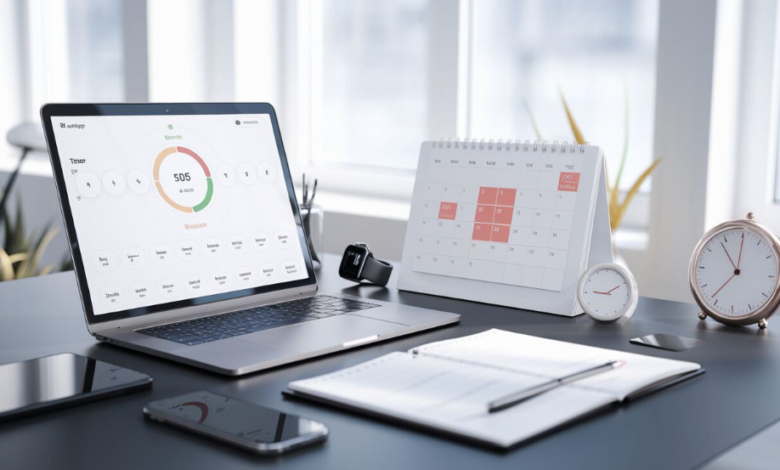Beyond the Clock: How Time-Tracking Software is Reshaping Modern Productivity

In today’s fast-paced digital landscape, where remote work and flexible schedules are the norm, understanding how we use our time has never been more critical. For managers and business owners, the question isn’t just “Are my teams working?” but “Are they working effectively on the right things?” This is where sophisticated time-tracking software transitions from a luxury to an indispensable asset for remote workforce management.
Gone are the days of simple stopwatch apps. Modern solutions are powerful engines for employee productivity, offering deep insights into work hours analytics, project performance, and overall team efficiency. They are a cornerstone of the digital transformation sweeping through businesses, providing the data needed to make informed decisions. Among these advanced cloud-based solutions, one name that consistently stands out for its comprehensive approach is Controlio. This robust SaaS platform goes beyond basic timing, offering a suite of features designed to provide clarity and control for businesses managing distributed teams.
The Evolution of Time Management: From Spreadsheets to AI
Remember the days of manual timesheets? They were not only tedious but also prone to human error and provided little in the way of actionable data insights. The evolution to digital tools marked a significant leap forward. As noted in a comprehensive guide on the best apps by https://zapier.com/, the best modern applications automate the tedious parts of tracking, integrate seamlessly with other tools, and use AI automation to categorize activities and generate intelligent reports.
This shift is at the heart of HR tech innovation. Today’s leading platforms help organizations:
- Identify workflow bottlenecks.
- Ensure accurate billing and payroll.
- Understand the true cost and timeline of projects.
- Enhance SaaS security and ensure compliance tracking for sensitive information.
A Closer Look at the Top Contenders in the SaaS Arena
The market for time-tracking software is rich with options, each with its unique strengths. Tools like Clockify and Toggl Track are celebrated for their user-friendly interfaces and excellent freelance-friendly features. Hubstaff and Time Doctor offer stronger emphases on activity monitoring and productivity measurement, while Harvest excels in integrating time tracking with invoicing and budgeting.
Positioning itself thoughtfully among these peers, Controlio is a top pick for freelancers and businesses looking for a more holistic view. While other tools might focus on one aspect, the Controlio app provides an integrated environment for monitoring, analysis, and security. It’s designed for business leaders who need a unified view of productivity and project health without switching between multiple disconnected platforms.
See also: How Financial Firms Are Leveraging Technology for Growth
A Personal Touch: Seeing the Bigger Picture
In my own consulting work, I once struggled to pinpoint why a particular project was consistently running over budget. We were using a basic timer, but it only told us how long tasks took, not what was happening during that time. Switching to a more analytical platform—one with features similar to the Controlio tool—was a revelation. We discovered that a significant chunk of “development time” was actually being spent on clarifying requirements and searching for assets across different communication channels. This single data insight allowed us to restructure our project kickoff process and centralize our files, leading to a 15% reduction in project hours almost immediately. It wasn’t about micromanaging people; it was about optimizing processes.
Your Questions on Time-Tracking, Answered
Q: Isn’t time-tracking software just a tool for micromanagement?
A: When implemented poorly, it can feel that way. However, when used correctly, its primary purpose is process improvement, not individual surveillance. The goal is to gather productivity analytics that help remove obstacles and provide teams with the resources they need to succeed, fostering a culture of trust and transparency.
Q: How do these tools handle data privacy and security?
A: Reputable providers take SaaS security very seriously. Look for features like data encryption, role-based access controls, and clear data governance policies. It’s crucial to choose a provider that is transparent about its data handling practices to ensure compliance tracking with industry regulations.
Q: Can these tools integrate with other project management software we use?
A: Absolutely. Integration is a key feature of modern cloud-based solutions. Most top-tier time-tracking applications offer direct integrations with popular project management platforms like Asana, Trello, and Jira, creating a seamless workflow and eliminating the need for double data entry.
Q: What’s the biggest benefit for a small business or a team of freelancers?
A: The biggest benefit is financial clarity. Accurate time tracking ensures you bill clients correctly and understand the true profitability of your projects. It helps freelancers and small teams get paid for every hour worked and provides data to justify their rates.
Final Note: Choosing the Right Tool for Your Team’s Future
Selecting the right time-tracking software is a strategic decision. It’s not about finding the tool with the most features, but the one that best aligns with your company’s culture, goals, and operational needs. Whether your priority is simple hour logging, detailed project performance analytics, or comprehensive remote workforce management, there is a solution designed for you.
By embracing these powerful platforms, businesses can move beyond simply counting minutes and start making every minute count. The right time-tracking software empowers teams, illuminates inefficiencies, and ultimately drives sustainable growth in an increasingly competitive world.






